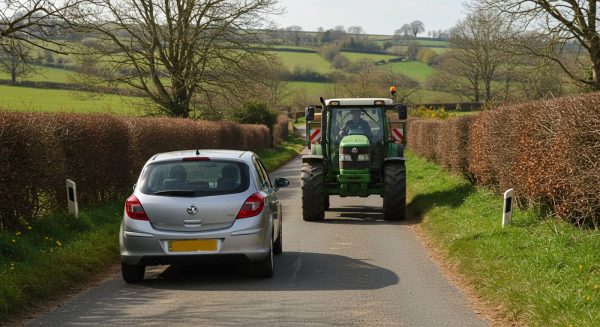Understanding size and weight restrictions for agricultural vehicles is crucial for safe and legal operation on UK roads. Here’s what farmers and agricultural operators need to know about the key dimensional limits.
Width Restrictions
Standard agricultural tractors must not exceed 3 meters in width. However, non-standard vehicles can. When your vehicle is between 3-3.5 meters wide, you must follow additional safety procedures if your journey is over 5 miles or involves travelling through a 40 mph zone. These include notifying the police two days before your journey, displaying “wide load” signs, and using a warning beacon.
For exceptionally wide vehicles between 3.5 and 4.3 meters, stricter rules apply. You’ll need police notification two days in advance, must travel at a maximum speed of 12 mph, and require an attendant (who can travel in a separate vehicle) to ensure other road users’ safety. The police may also impose additional restrictions to manage traffic flow and safety.
Height Requirements
While there isn’t a strict maximum height limit for agricultural vehicles in the UK, any vehicle exceeding 3 meters in height must display a notice in the cab that meets specific requirements. The notice must be clearly visible to the driver and show the vehicle’s height in both feet and inches, with numbers at least 40 mm tall. For accuracy, you may also include the measurement in metres, though any difference between the imperial and metric measurements must not exceed 50 mm.
Weight Restrictions
The maximum authorised mass (MAM) for an agricultural vehicle must not exceed 31,000 kg, as stated in the UK government guidance. For agricultural trailers specifically, the maximum laden weight is 18,290 kg. When combining a vehicle and trailer, the total weight must not exceed 31,497 kg.
Equipment and Attachments
Special considerations apply to equipment like fore-end loaders or telescopic handlers. The Health and Safety Executive advises that when travelling on public roads, any forks or front-mounted handling attachments should either be removed and transported separately, folded back and secured, or protected by an appropriate guard. This prevents them from being considered dangerous projections that could risk other road users’ safety.
Exceeding Limits
If you need to operate vehicles or equipment that exceed these standard dimensions, you may require special permits or dispensations. Always check with local authorities and the police before undertaking such movements, as requirements can vary by region and route.

The regulations exist to ensure both your safety and that of other road users. While they might sometimes seem restrictive, they help maintain order on increasingly busy rural roads where agricultural and civilian traffic must coexist safely.
